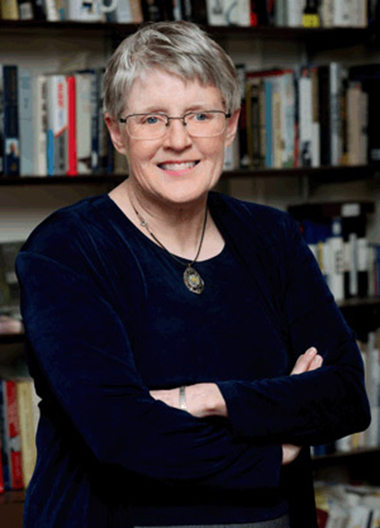Featured Testimonial About Creighton University
When you look into the city’s history, you can’t help but see the impact of Creighton (and Creighton women) on the community.
Eileen Wirth’s new book, The Women Who Built Omaha: A Bold and Remarkable History, can be purchased here.
* * *
By Micah Mertes

Eileen Wirth’s new history of notable Omaha women frequently reads as a history of notable Creighton women.
This was inevitable, Wirth says. The stories of the city and the University are inextricably connected, with many of the same women writing important chapters in both.
Women like Creighton University co-founders Mary Lucretia and Sarah Emily Creighton. Or Mary Higgins, BA’73, the first woman inducted into the Creighton Athletics Hall of Fame; and the Creighton students among the first members of the pioneering Civil Rights organization the DePorres Club.
Wirth sheds light on these pivotal figures and many more in The Women Who Built Omaha: A Bold and Remarkable History.
The Creighton professor emeritus of journalism says she was inspired to write the book after doing a quick check of the indexes in two Omaha histories written a century apart. In both, she only found a small percentage of women’s names.
“Women were barely mentioned in our local history,” Wirth says. “The reason is the histories focused mostly on politics and business. They left out education, health care, human services and culture. With this book, I wanted to write the chapters absent in our city’s history. In the process, I learned about some amazing women.”

Creighton women are prominent throughout the book, Wirth says, because alumnae have been involved in the progress of so many fields throughout the city’s history.
“When you look into the city’s history, you can’t help but see the impact of Creighton (and Creighton women) on the community,” Wirth says.
And even when the influential women weren’t alumni, there was often a Creighton connection.
Wirth’s favorite historical figure in the book is Rachel Gallagher (daughter-in-law of the namesake of the soon-to-be-demolished Gallagher Hall). She was a prominent philanthropist and advocate who continually fought the city and developers to maintain Omaha’s parks.
“She would scour newspapers in the 1930s and ’40s to find meetings where she could preach about beautifying grimy, smelly Omaha,” Wirth says of Gallagher. “She was so determined to protect our parks from interstate construction that in the 1950s she went to Washington and obtained a letter from the Secretary of the Interior requiring her consent to touch them.”
Like all the women featured in Wirth’s book, Gallagher’s contributions remain forever woven into the city’s landscape, its history and, in so many cases, its very first college.


